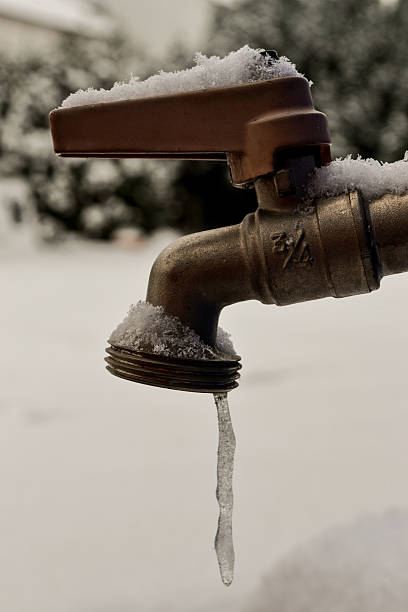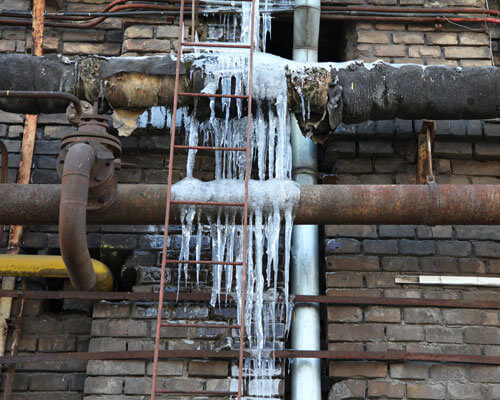Crucial Advice for Avoiding Frozen Pipes in Winter Conditions
Crucial Advice for Avoiding Frozen Pipes in Winter Conditions
Blog Article
We've come across this post relating to Winter Plumbing Precautions: Preventing Frozen Pipes directly below on the internet and accepted it made sense to share it with you over here.

Winter can ruin your pipes, particularly by freezing pipelines. Here's how to avoid it from happening and what to do if it does.
Introduction
As temperature levels drop, the danger of icy pipes boosts, possibly leading to expensive fixings and water damage. Comprehending exactly how to stop icy pipelines is essential for house owners in cool environments.
Understanding Frozen Pipes
What causes pipes to freeze?
Pipes freeze when exposed to temperatures listed below 32 ° F (0 ° C) for expanded durations. As water inside the pipelines freezes, it broadens, putting pressure on the pipe wall surfaces and possibly triggering them to rupture.
Risks and problems
Icy pipes can lead to water supply disturbances, residential or commercial property damage, and pricey repair services. Burst pipelines can flood homes and create substantial structural damages.
Signs of Frozen Piping
Determining icy pipes early can stop them from bursting.
Just how to identify icy pipelines
Search for lowered water flow from faucets, uncommon odors or noises from pipelines, and noticeable frost on exposed pipelines.
Avoidance Tips
Insulating vulnerable pipelines
Wrap pipes in insulation sleeves or use warm tape to shield them from freezing temperatures. Focus on pipes in unheated or outside locations of the home.
Home heating techniques
Keep interior spaces effectively warmed, specifically locations with pipes. Open up closet doors to permit cozy air to distribute around pipes under sinks.
Safeguarding Outside Plumbing
Garden tubes and exterior taps
Detach and drain yard tubes prior to winter season. Install frost-proof faucets or cover outside faucets with insulated caps.
What to Do If Your Pipelines Freeze
Immediate actions to take
If you suspect icy pipes, maintain faucets open to soothe pressure as the ice thaws. Utilize a hairdryer or towels taken in warm water to thaw pipelines slowly.
Long-Term Solutions
Architectural modifications
Take into consideration rerouting pipes far from exterior wall surfaces or unheated locations. Add additional insulation to attic rooms, basements, and crawl spaces.
Updating insulation
Buy premium insulation for pipelines, attic rooms, and walls. Appropriate insulation aids keep consistent temperatures and minimizes the threat of icy pipes.
Conclusion
Stopping icy pipelines calls for aggressive actions and fast reactions. By recognizing the causes, signs, and safety nets, property owners can shield their plumbing throughout winter.
6 Proven Ways to Prevent Frozen Pipes and Protect Your Home
Disconnect and Drain Garden Hoses
Before winter arrives, start by disconnecting your garden hoses and draining any remaining water. Close the shut-off valves that supply outdoor hose bibs and leave the outdoor faucet open to allow any residual water to drain. For extra protection, consider using faucet covers throughout the colder months. It’s also important to drain water from any sprinkler supply lines following the manufacturer’s directions.
Insulate Exposed Pipes
Insulating your pipes is an effective way to prevent freezing. Pipe insulation is readily available at home improvement stores and is relatively inexpensive. Pay close attention to pipes in unheated areas such as the attic, basement, crawl spaces, or garage. Apply foam insulation generously to create a buffer against the cold. You can also wrap your pipes in heat tape or thermostat-controlled heat cables for added warmth.
Seal Air Leaks
Inspect your home for any cracks or openings that could let in cold air. Seal any holes around the piping in interior or exterior walls, as well as the sill plates where your home rests on its foundation. Additionally, make sure to keep your garage door closed unless you’re entering or exiting. Leaving it open creates a significant air leak that can lead to frozen pipes.
Allow Warm Air Circulation
During cold snaps, it’s essential to allow warm air to circulate evenly throughout your home. Leave interior doors ajar to promote better airflow. Open kitchen and bathroom cabinets to help distribute heat consistently around the rooms. If you have small children or pets, be sure to remove any household chemicals or potentially harmful cleaners from open cabinets for safety.
Let Faucets Drip
A small trickle of water can make a big difference in preventing ice formation inside your pipes. When temperatures drop significantly, start a drip of water from all faucets served by exposed pipes. This continuous flow helps prevent the water from freezing. Additionally, running a few faucets slightly can relieve pressure inside the pipes, reducing the chances of a rupture if the water inside does freeze.
https://choateshvac.com/6-proven-ways-to-prevent-frozen-pipes-and-protect-your-home/

We were shown that article on Helpful Tips to Prevent Frozen Pipes this Winter through an acquaintance on our other web property. Are you aware of somebody else who is involved in the subject? Please feel free to promote it. I treasure your readership.
Show Details Report this page